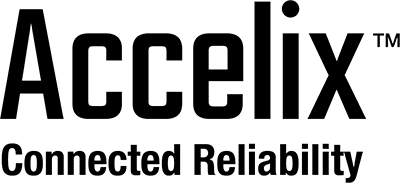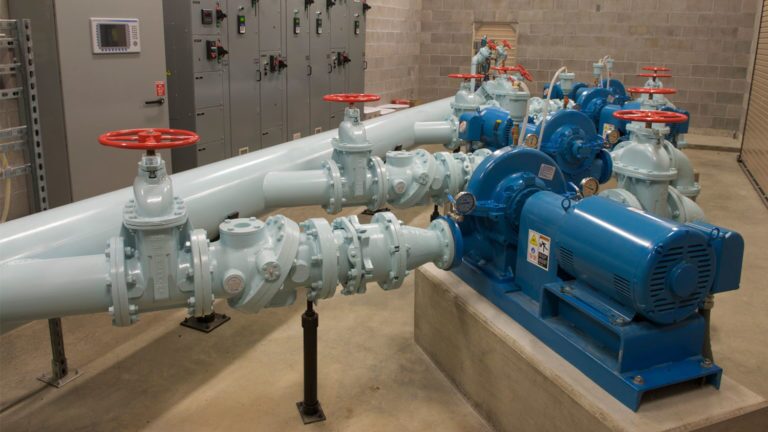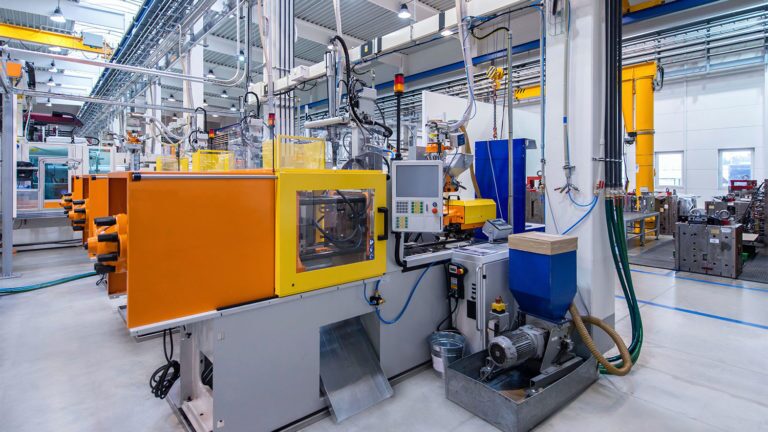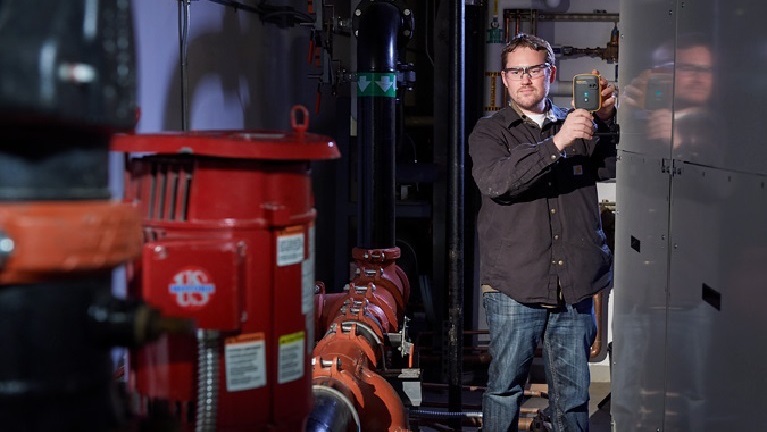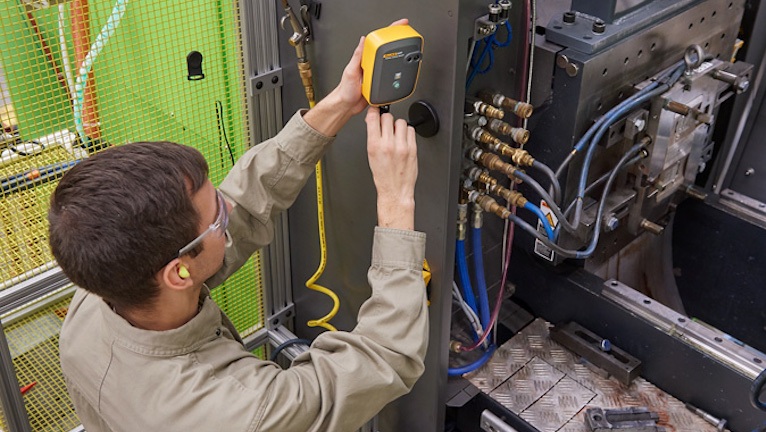What is the Industrial Internet of Things?
While the concept of the Industrial Internet of Things (IIoT) seems abstract and foreign to many people, it can be applied across a variety of applications and industries. The IIoT was developed based on the idea that by connecting the digital and physical worlds, information exchange can be improved and elevated within industrial and maintenance applications. The “digital world” in this context includes mobile devices, computers and tablets, while the “physical world” encompasses plant and testing equipment. Extending beyond the basic IIoT definition helps organizations increase visibility into machine performance, inefficiency in processes, potential savings and recommendations on how to best fix these issues.
Different industries leverage the power of IIoT in unique ways. For example:
- Maintenance teams can use vibration analysis, infrared thermography and ultrasound technology to determine when downtime will occur, as well as use this data to revisit preventive maintenance schedules and increase equipment uptime.
- For companies focused on inventory and using the IIoT, teams can connect their stockrooms to track orders, incoming shipments or low-stocked items.
- With fully connected IIoT devices, maintenance managers, technicians and the entire plant staff can develop IIoT programs to access data in real-time and turn that data into actionable methods to predict and prevent failures.
The IIoT vs IoT
The IIoT is a subset of the larger concept of the Internet of Things (IoT). The IoT is a network of devices that are connected via the internet and have the ability to transfer data without specific human interaction. Common examples include smart devices used in homes to monitor and control lighting, temperature and televisions. The difference between the IoT and IIoT are their primary uses. While the IoT is used by all types of consumers, the IIoT is focused on the specific needs of industrial applications, including oil and gas, manufacturing and warehousing.
The IIoT leverages technology to improve equipment and processes, as well as to prepare an organization for predictive maintenance. For example, using wireless tools that are connected to data systems such as computerized maintenance management systems (CMMS) empowers companies to track trends and measurements over time. Organizations such as those in the healthcare field are implementing technological solutions to automate billing, medical imaging and medical record processing. When IIoT devices and systems work together, it helps bridge the communication gap between medical devices and IT networks.
Where the IIoT connects industrial machinery for healthcare organizations or robotic devices filled with sensors on the plant floor, the IoT connects devices used by consumers on a daily basis. One of the simplest and most popular applications of the IoT are smart light bulbs that can be programmed to turn on and off or change color using an internet connection and an application programming interface (API).
What are the benefits of the IIoT?
As stated earlier, one of the main goals of the IIoT is to increase visibility into machine performance, inefficiency in processes and potential savings. Once the IIoT infrastructure is developed, teams can gain an in-depth understanding of the patterns and behavior of equipment. From there, maintenance teams can:
- Revamp existing preventive maintenance schedules
- Optimize maintenance resources by assigning work as needed based on asset condition data
- Extend the life of critical pieces of equipment
Also, the IIoT allows organizations to access, connect and utilize data that is likely already being recorded by the maintenance staff. With an interconnected facility, repositories of fixed data can be opened to connect procedures, information and employees from maintenance workers to high-level executives. This communication loop helps illustrate a clear, data-driven picture of operations so that leaders can make the most informed decisions for the business. This is critical for maintenance teams and plant managers, as well. These teams understand where inefficiencies are, and, with the IIoT, they are empowered to present data to spark change and improve daily processes.
To better understand the IIoT and its benefits, it is crucial to compare it to data islands. A data island is data stored on a personal digital assistant (PDA) or other type of computer that cannot connect to other devices. It makes data syncing or copying basically impossible, and inhibits data utilization for people working in the maintenance industry. On the flip side, the IIoT makes it possible to sync and share data in real time.
As a result of the communication capabilities of the IIoT, connections are starting to be made with other traditional methods of controlling and monitoring equipment conditions. For example, the IIoT and supervisory control and data acquisition (SCADA) systems have begun working together. SCADA systems are cyber-secure combinations of hardware and software that collect, analyze and control information via hundreds of sensors. The advent of technology such as the IoT and IIoT helps to deploy automated communications and commands across an entire organization.
How should your facility initiate an IIoT program?
Before anyone begins thinking about IIoT implementation, organizations must receive buy-in from internal stakeholders. To do this, be sure to:
- Explain “what’s in it for them.” If you can clearly explain the benefits of IIoT (such as optimizing time, saving money and improving daily processes), stakeholders will be much more interested in approving the project. Try to align these benefits closely with corporate objectives, as well.
- Present a well-developed business case. When presenting the case for IIoT, focus on financial benefits and methods to mitigate risk. Present as much data from case studies and research as possible.
- Offer stakeholders a role in the process. Ask the investors for feedback, suggestions or aspects of the project that they feel are possibly being overlooked.
To get started building your our IIoT manufacturing/facilities/services system, remember the old adage — “begin with the end in mind.” That is, begin planning around the big problems you are looking to solve. Set realistic goals, and get started with a tangible issue that is easily measured and tracked. Maintenance teams at all levels including plant managers, technicians, and high-level executives should be involved in carving out the scope of the project. This way, teams are active members in the process rather than overwhelmed and uninterested in the success of the new venture.
Organizations should also establish a budget, as well as time and resource commitments. As you start implementing an IIoT solution, aim for quick, segmented wins that will excite employees. Whether a maintenance team is well-versed in tracking data or the IIoT project is the first time data will be collected, focus on the data that matters. For example, if a company-wide goal is to improve equipment uptime, collect data on equipment downtime and the factors contributing to downtime. Another important best practice is to begin tracking organizational key performance indicators (KPIs), which are metrics used to evaluate factors that are crucial to the success of an organization. One of the most critical ways to get started with IIoT is to standardize the way data is recorded, so the information is organized and easy-to-use across the entire organization.
The IIoT is a network of devices that are connected via communication technology, which results in the ability to collect, monitor, analyze and discover insights about a maintenance team’s most valuable assets. These insights can lead to improved visibility, performance, communication and decision-making. To get started leveraging the power of the IIoT within your facility, make sure you carve out the scope of the project, remember the big picture and start with small, easy improvements. IIoT can completely revitalize an organizations maintenance, production and overall business processes.
